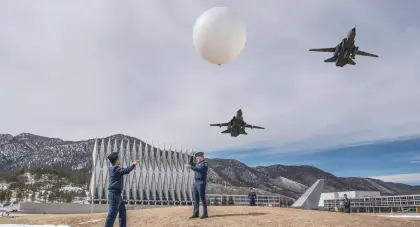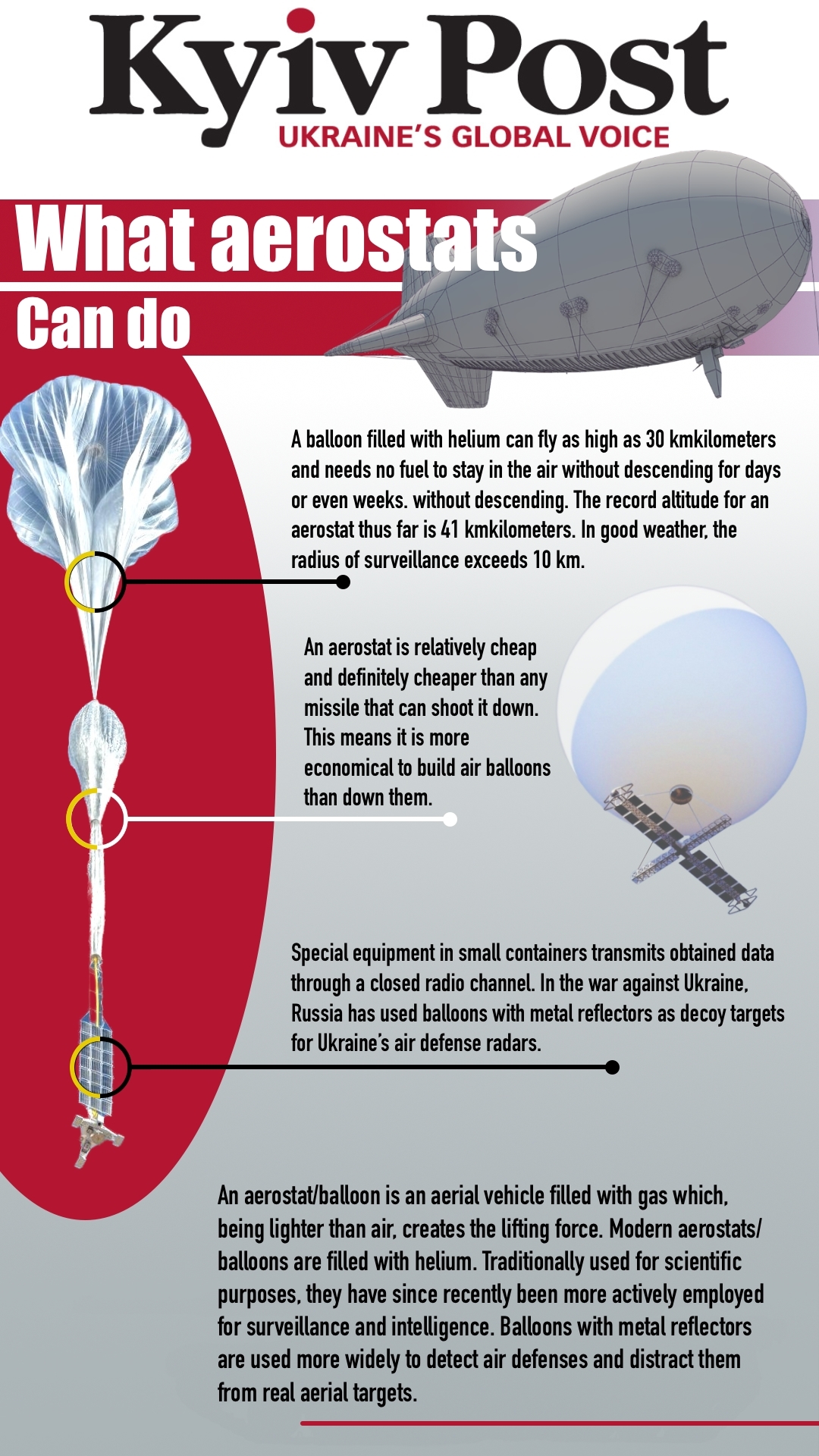In recent weeks, a spate of air balloons emerged in Ukraine's airspace that may have been launched from Russia and Belarus. There are peculiar similarities to those spotted in U.S. airspace. Indeed, U.S. intelligence reports said that several drifting Chinese balloons were shot down and that they may have been used for spying.
Let’s take a closer look.
JOIN US ON TELEGRAM
Follow our coverage of the war on the @Kyivpost_official.
The balloons in Ukraine's airspace had metal reflectors which radars detect as air targets. Their structure is very simple: just two or three metal sheets that perfectly reflect radio waves. Such balloons are rather difficult to shoot down due to their high altitude and low visibility to air defenses.
They are used to distract, exhaust and even detect air defense systems. Their manufacture is inexpensive while the cost of shooting down one balloon reaches hundreds of thousands of dollars. The enemy wants us to expend our missiles on such decoys instead of its aircraft and cruise missiles that attack our cities and infrastructure.
Russia has aerostats that can carry up to 900 kilograms of payload at altitudes of up to 33 kilometers. Russian media suggests the payload could be bombs or other explosives, even though it is practically impossible to ensure precision. Smaller balloons could carry special equipment for adjusting artillery fire in specific areas.

N. Korean Troops Massed in Russia to Enter Ukraine War ’Soon’: Pentagon Chief
You can also highlight the text and press Ctrl + Enter







